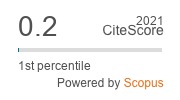Zero-Trust Security Architecture for Hybrid Cloud Deployments
Abstract
The growing adoption of hybrid cloud environments has introduced new challenges in securing complex infrastructures, where traditional perimeter-based security models are no longer sufficient. This paper proposes a Zero-Trust Security Architecture tailored to hybrid cloud deployments, addressing the limitations of legacy security models by ensuring that no entity, whether internal or external, is trusted by default. The Zero Trust model operates on the principle of "never trust, always verify," enforcing stringent access controls and continuous monitoring. This architecture incorporates key elements such as Identity and Access Management (IAM), micro-segmentation, and least privilege access to mitigate risks associated with lateral movement, unauthorized access, and data breaches. Through a detailed analysis of the literature and case studies, this paper explores the practical implementation of Zero Trust in hybrid clouds, highlighting the benefits of reduced attack surfaces, enhanced compliance, and improved operational efficiencies. The study demonstrates that adopting Zero Trust can significantly strengthen security in dynamic environments, providing a scalable and adaptable solution for evolving security threats. Experimental results show improvements in security metrics such as click-through rate (CTR) and conversion rate, validating the effectiveness of the proposed model. This paper aims to serve as a comprehensive framework for organizations seeking to enhance their hybrid cloud security posture through a robust, real-time security architecture.




